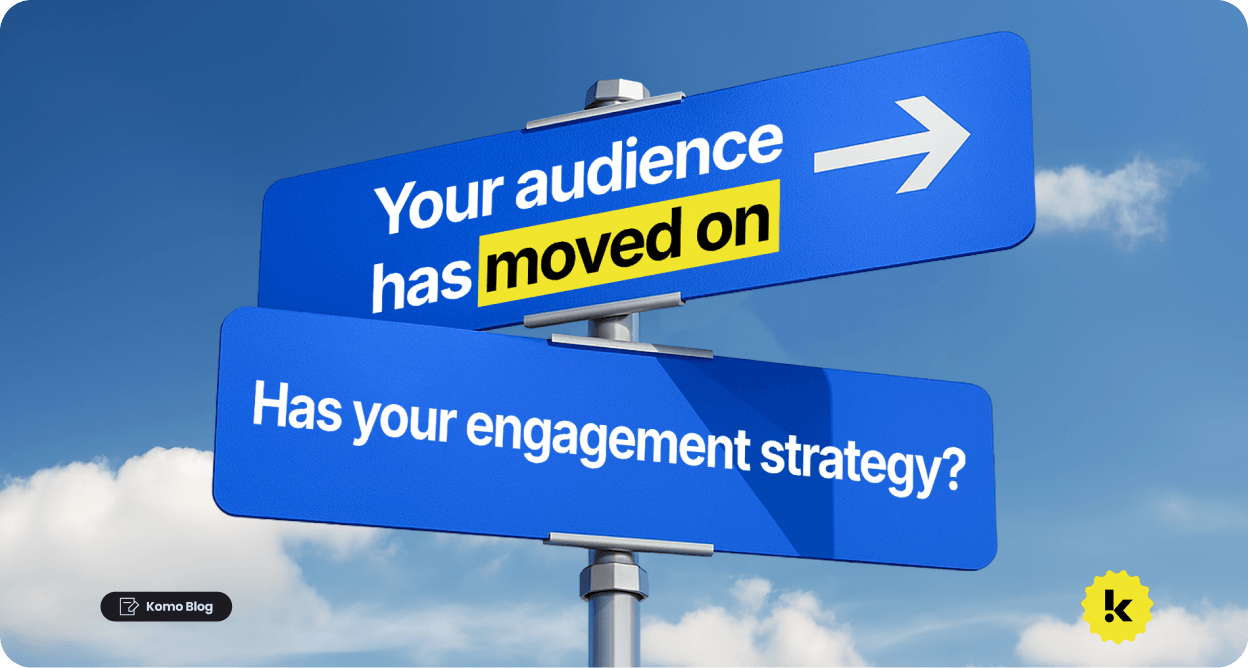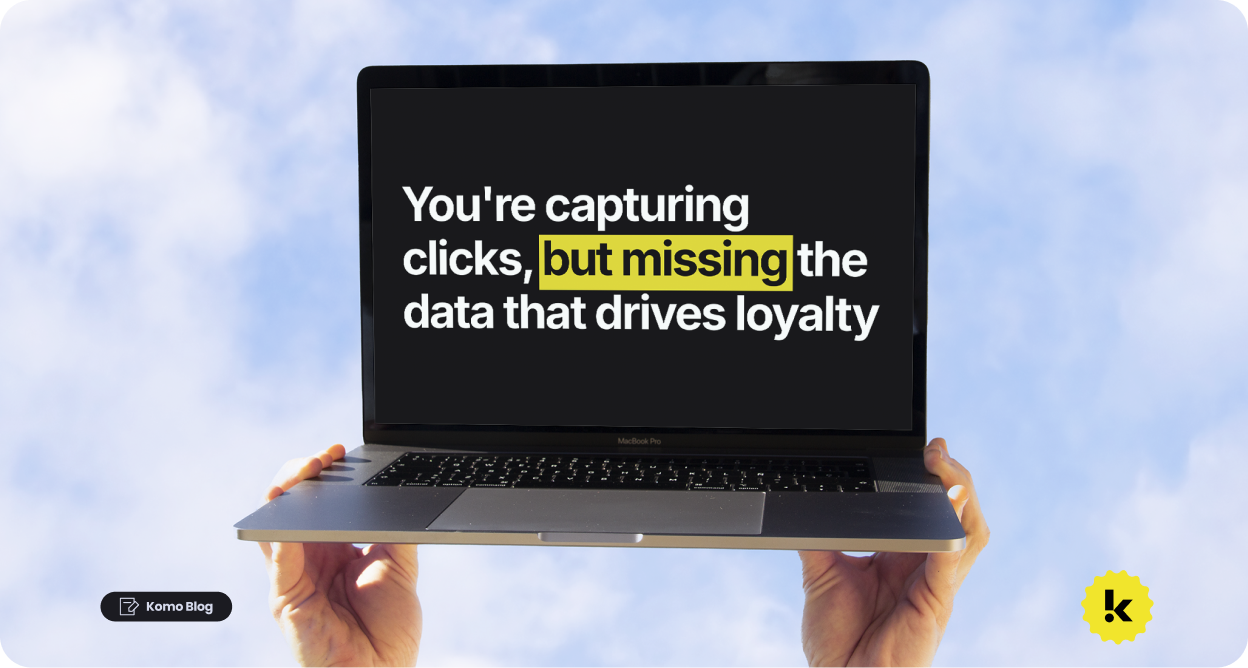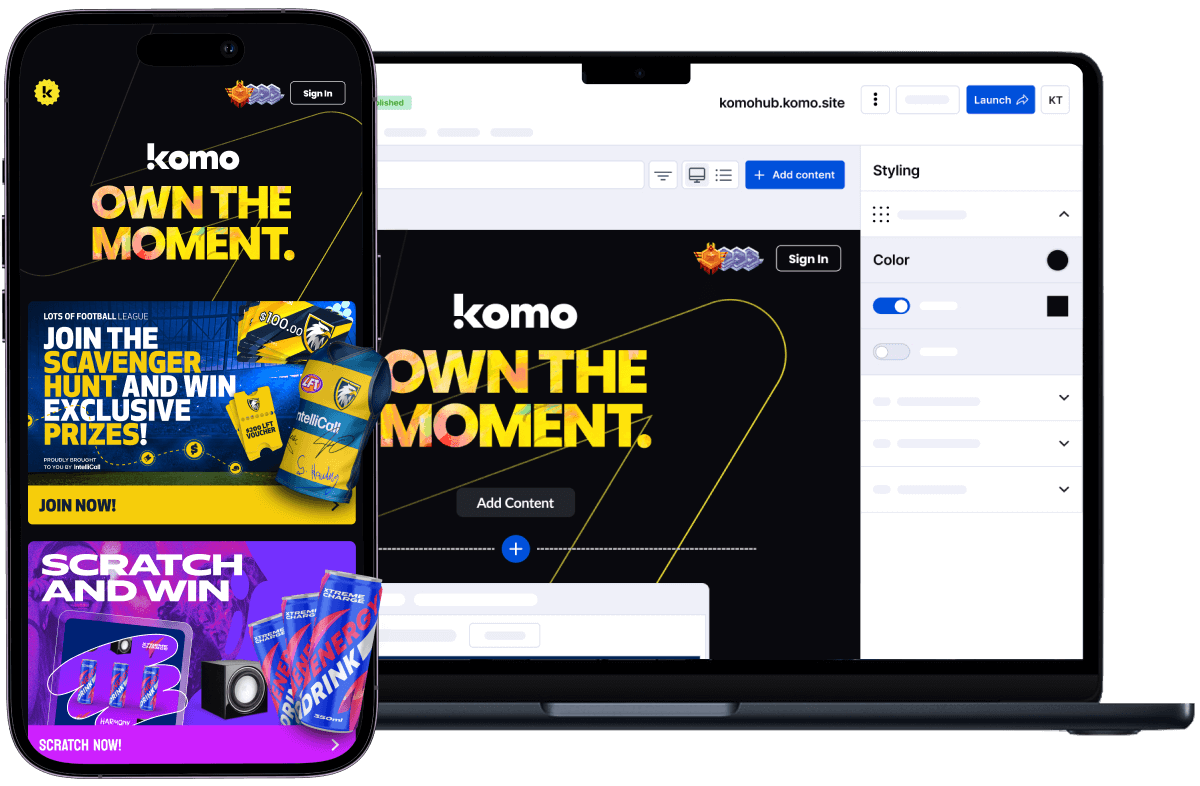Your customers aren't paying attention the way they used to.
They're scrolling faster. Switching between platforms. Ignoring ads with surgical precision. The average consumer sees over 5,000 marketing messages daily, yet remembers almost none of them.
Meanwhile, most brands are still running the same playbook from 2019: blast messaging, static content, and one-way conversations that assume attention instead of earning it.
If your engagement feels like shouting into the void, there's a reason.
The attention economy has new rules
Five years ago, showing up was enough. Post on social, send an email, run some ads—customers would engage because options were limited and habits were predictable.
Not anymore.
87% of consumers now use ad blockers or skip content within seconds. The same promotional tactics that once drove results now trigger instant dismissal. Customers have trained themselves to filter out anything that feels like traditional marketing.
But here's what's interesting: they're not disengaging from brands entirely. They're just being more selective about how they engage.
The brands that still capture attention? They've stopped broadcasting and started conversing.
When passive becomes background noise
Let's call it out: most engagement strategies are built for a passive audience that no longer exists.
Email open rates continue declining (industry average now sits below 20% for most sectors). Social media organic reach has plummeted—less than 2% for most brand content. Even paid advertising faces increasing resistance as consumers become banner-blind and install more sophisticated ad-blocking technology.
Your carefully crafted campaigns aren't failing because the creative is wrong. They're failing because the entire approach assumes people will stop and pay attention.
Modern consumers don't stop. They participate—or they move on.
The participation gap
88% of consumers say they're more likely to engage with brands that offer interactive experiences rather than static content. Yet most marketing teams are still optimizing for impressions, not interactions.
Think about the last piece of content that genuinely captured your attention. Was it a banner ad? A promotional email? Or was it something you could click, play with, vote on, or personalize?
The gap isn't just tactical—it's philosophical.
Traditional engagement assumes your audience will consume what you create. Participatory engagement lets them help create the experience itself. One feels like marketing. The other feels like value.
The multi-platform reality
Your customers aren't living on one platform anymore. They're bouncing between email, social, websites, apps, and offline experiences—often within minutes of each other.
71% of consumers expect consistent, personalized experiences across every touchpoint. But most brands deliver fragmented messages because their tools and teams operate in silos.
When your email team doesn't know what happened in your app, when your social content ignores website behavior, when your events exist separately from your digital strategy—you're creating friction instead of flow.
Customers notice. And they're less forgiving than ever.
The speed problem
Consumer behavior has accelerated, but most marketing operations haven't kept pace.
60% of consumers expect brands to respond to their actions immediately—not next quarter when the next campaign launches. If someone engages with your content today, they want relevance today. Tomorrow feels stale.
Traditional campaign cycles (plan for months, launch for weeks, analyze for more months) can't match this expectation. By the time you've optimized last quarter's campaign, your audience has moved on to new interests, platforms, and priorities.
The brands winning attention have learned to move at customer speed.
The trust deficit
Only 34% of consumers trust brands to use their data responsibly, yet most engagement strategies still rely on invasive tracking and purchased lists that feel impersonal at best, creepy at worst.
Meanwhile, customers are increasingly willing to share information—but only when there's clear, immediate value in return. They'll tell you their preferences if you use them well. They'll participate in quizzes if the results are helpful. They'll join communities if the experience is worthwhile.
The shift isn't about having less data—it's about earning better data.
What engagement looks like now
The brands capturing attention today understand that engagement isn't something you do to customers—it's something you do with them.
They're not asking people to watch their content; they're creating experiences people want to participate in. They're not pushing messages; they're starting conversations. They're not collecting data; they're earning insights.
This isn't about being more creative with the same old tactics. It's about fundamentally changing how you think about the relationship.
The opportunity cost
Every day you spend optimizing impression-based campaigns is a day your competitors might be building participation-based relationships.
Engaged customers spend 67% more than casual ones and stay loyal significantly longer. But you can't build that engagement with static content and one-way messaging.
The question isn't whether consumer behavior has changed—it's whether you're adapting fast enough to keep up.
The reality check
If you're still measuring success primarily through reach, impressions, and click-through rates, you're optimizing for a game that's already over.
The new metrics that matter:
- How long do people actually engage with your content?
- Are they willing to share preferences and feedback?
- Do they come back without being prompted?
- Are they participating, not just consuming?
These aren't vanity metrics. They're leading indicators of the kind of relationships that drive long-term value.
What's possible
Your audience has evolved. The question is: will your engagement strategy evolve with them?
Ready to see where you stand—and what's possible when you shift from broadcasting to participating?
- Take the 2-minute Engagement Maturity Assessment - Discover how your current approach compares to what today's consumers expect
- See How Leading Brands Evolved - Real examples of companies that made the shift from static to participatory
- Engagement Maturity Model - Understand what it takes to capture and keep attention in 2025
Your audience has moved on. The question is: have you?
Take our 2-minute Engagement Maturity Assessment to discover if your current approach is truly connecting with today's consumers.


.png)

